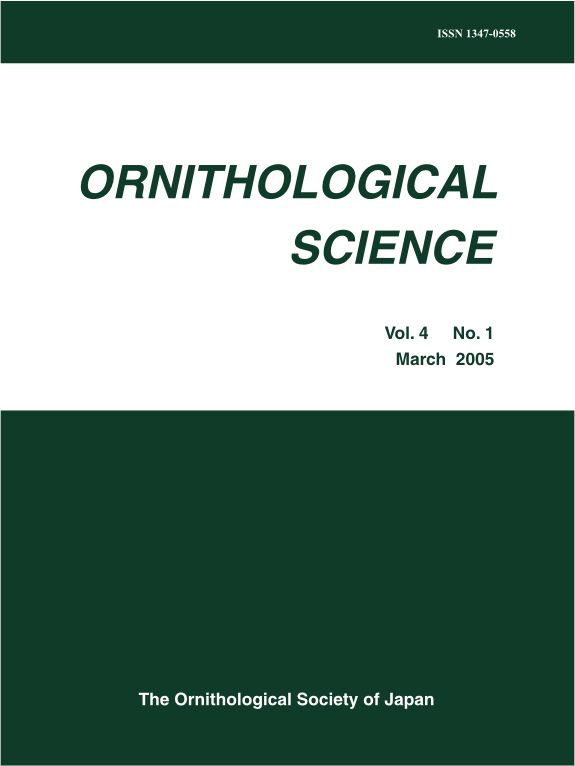8 巻, 2 号
選択された号の論文の11件中1~11を表示しています
- |<
- <
- 1
- >
- >|
ORIGINAL ARTICLES
-
原稿種別: Original Article
2009 年 8 巻 2 号 p. 97-104
発行日: 2009/12/25
公開日: 2010/04/23
PDF形式でダウンロード (650K) -
Breeding bird community of the Ogawa Forest Reserve, an old-growth deciduous forest in central Japan原稿種別: Original Article
2009 年 8 巻 2 号 p. 105-115
発行日: 2009/12/25
公開日: 2010/04/23
PDF形式でダウンロード (160K) -
原稿種別: Original Article
2009 年 8 巻 2 号 p. 117-124
発行日: 2009/12/25
公開日: 2010/04/23
PDF形式でダウンロード (21608K) -
原稿種別: Original Article
2009 年 8 巻 2 号 p. 125-130
発行日: 2009/12/25
公開日: 2010/04/23
PDF形式でダウンロード (564K) -
原稿種別: Original Article
2009 年 8 巻 2 号 p. 131-138
発行日: 2009/12/25
公開日: 2010/04/23
PDF形式でダウンロード (1172K) -
原稿種別: Original Article
2009 年 8 巻 2 号 p. 139-146
発行日: 2009/12/25
公開日: 2010/04/23
PDF形式でダウンロード (5116K)
SHORT COMMUNICATIONS
-
原稿種別: Short Communication
2009 年 8 巻 2 号 p. 147-150
発行日: 2009/12/25
公開日: 2010/04/23
PDF形式でダウンロード (491K) -
Prey selection and provisioning rate of a breeding pair of Hodgson's Hawk-eagles Nisaetus nipalensis原稿種別: Short Communication
2009 年 8 巻 2 号 p. 151-156
発行日: 2009/12/25
公開日: 2010/04/23
PDF形式でダウンロード (484K) -
原稿種別: Short Communication
2009 年 8 巻 2 号 p. 157-161
発行日: 2009/12/25
公開日: 2010/04/23
PDF形式でダウンロード (492K) -
原稿種別: Short Communication
2009 年 8 巻 2 号 p. 163-167
発行日: 2009/12/25
公開日: 2010/04/23
PDF形式でダウンロード (295K) -
原稿種別: Short Communication
2009 年 8 巻 2 号 p. 169-171
発行日: 2009/12/25
公開日: 2010/04/23
PDF形式でダウンロード (5538K)
- |<
- <
- 1
- >
- >|
